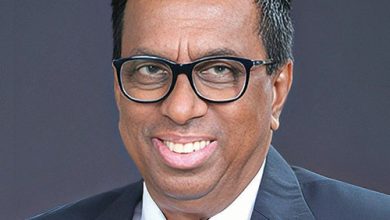
Q: What is your assessment of Sri Lanka’s readiness to adopt green energy and alternative fuels?
A: We must understand what ‘readiness’ is. Sri Lanka is ready for alternative energies. These technologies have been adopted and used in many parts of the world, and also in Asia as we speak.
The only hindrance is government policies. Wage and tariff structures for both international and local investors are not conducive to pursuing these projects in Sri Lanka.
And the main problem is the time taken to implement such policies. Wasting time is the biggest cost and saving time is the biggest profit.
Restructuring the energy sector in line with proven international standards is the highest priority at this moment in line with the IMF’s recommendations.
Q: Could you explain how your organisation looks to advance the alternative energy solutions domain?
A: Any child can understand what we went through as a nation during the fuel crisis. More than 60 percent of Sri Lanka’s power is generated from coal and petroleum fuel, relying on imports and foreign trade to sustain it. As a nation, we have hit rock bottom by not having alternative energy sources to produce power.
Therefore, it’s high time we learn lessons from this. Ceylon Energy is working with our partners and policy makers to make more alternative energies available to the Sri Lankan grid.
Also, the proposed power transmission line connection between Sri Lanka and India will give us more options in renewable energy. This is the only way to overcome the technological barriers with the lowest cost.
Q: Can you share with us your portfolio of alternative energy solutions?
A: We are working with our partners on a 100 MW solar project. And we’re also working with national universities and some government offices on the possibility of harnessing geothermal energy in Sri Lanka. The feasibility study is now in the planning stage.
Our core business is project management, and manufacturing power and telecommunication towers. We’ve disrupted the market by bringing world renowned technologies such as Helical Foundation Systems and HTLS (high tensile low sag) carbon fibre core for power towers.
These technologies have a significantly lower carbon footprint and can be installed quickly, making product execution faster. They have indirectly impacted alternative energy creation.

Q: How does your organisation go about customising alternative energy solutions to suit customers’ requirements?
A: We always follow the standards provided by the utilities or donors such as the Asian Development Bank (ADB). We have highly qualified technical staff who study customer specifications and customise our solutions to cater to standards.
Q: What are the strengths underpinning Ceylon Energy’s operations?
A: We have qualified professionals, chartered engineers and project managers. In addition, we continuously learn from our international partners in the US and China. They visit our teams regularly to audit our processes and educate our team. Implementing alternative energy solutions is a more collaborative approach.
Introducing alternative energies to Sri Lanka is a worthy cause as reflected in our slogan ‘Lighting People’s Lives’ – we are not merely interested in the profits around it.
Q: How is the brain drain impacting your organisation’s efforts in this domain?
A: This is quite a challenge. However, I have a core team who are committed and dedicated to the company, whom I can rely on 100 percent. I see this gap mainly in newcomers and trainees, where we face challenges in identifying the correct match for our company.
Having graduated as a mechanical engineer with First Class Honours from the University of Liverpool in the UK, I had ample opportunities to stay and work for someone else. But I had a hard, core rule to come back and serve my country, which I did in 2012.
So in 2013, together with my directors, I set up the first transmission tower manufacturing production line in Sapugaskanda. In 2019, we began manufacturing telecommunication towers for all the leading telcos in Sri Lanka and then in 2021, we started Helical manufacturing here under the licence of Hubbell Power Systems, USA.
Q: What trends do you foresee in regard to businesses embracing alternative and renewable energy in the next 12-24 months?
A: Physically, what we will see is more solar and wind – both onshore and offshore – as alternative energy sources with the aggressiveness of policy makers, utilities and investors. However, I believe that some good changes will take place to welcome other alternative energy generation like battery backup solutions, nuclear and geothermal.
Q: And what are your organisation’s plans for expansion going forward?
A: We already have a presence in Kenya, facilitating access to East African markets, and a company in China. With this access and these strengths, we believe that we can develop 2,000 MW of green energy by 2028 in our markets – i.e. Sri Lanka and East Africa. This is our mission. We will become the market leader in South Asia’s energy sector in 2028.
– Compiled by Allaam Ousman

Chairman
“Restructuring the energy sector in line with proven international standards is the highest priority at this moment”
Telephone 0773 104123 | Email: madu@ceylonenergy.com | Website: www.ceylonenergy.com





